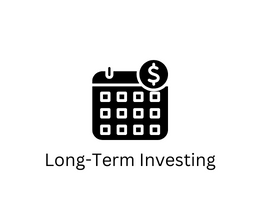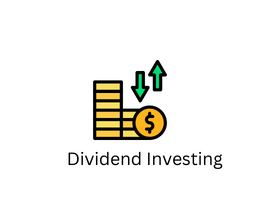
7 Investment Strategies Every Investor Should Know
- By admin --
- Sunday, 12 Mar, 2023
Investment strategies refer to the various approaches or techniques used by investors to allocate their funds with the aim of achieving long-term growth, generating income, or both. The specific investment strategies used will depend on the investor's risk tolerance, financial goals, and investment horizon. Here are some of the most common investment strategies:
-
Buy and hold: This strategy involves buying investments, such as stocks or bonds, and holding them for a long period, typically five years or more. The idea is to benefit from the long-term growth of the investment and minimize the impact of short-term market volatility.This strategy is based on the idea that the stock market tends to rise over the long term, despite short-term fluctuations. Investors using this strategy typically buy high-quality investments and hold them for years or even decades, with the goal of achieving long-term capital appreciation. The advantages of this strategy include lower transaction costs and potentially lower tax liabilities, as long-term investments are typically taxed at lower rates. The downside is that it requires patience and a willingness to ride out short-term market volatility.
-
Value investing: This strategy involves looking for undervalued stocks or other assets that are trading at a discount to their intrinsic value. The goal is to identify investments that have the potential to increase in value over time.This strategy is based on the belief that the market sometimes undervalues good companies, providing investors with an opportunity to buy high-quality investments at a discount. Value investors typically look for companies with strong fundamentals, such as low price-to-earnings ratios, high dividend yields, and solid balance sheets. The goal is to hold these investments until the market recognizes their true value, resulting in capital appreciation. The advantage of this strategy is that it can lead to strong long-term returns with lower risk. The downside is that it requires patience, as undervalued stocks may take time to appreciate.
-
Growth investing: This strategy involves investing in companies that have strong growth potential, typically in emerging markets or industries. The goal is to benefit from the potential for high returns, but this approach comes with higher risk and volatility.This strategy is based on the belief that some companies have the potential to grow at a much faster rate than the overall market, providing investors with an opportunity for high returns. Growth investors typically look for companies in emerging markets or industries, such as technology or biotech, that have a competitive advantage and a track record of strong growth. The advantages of this strategy include potentially high returns and the opportunity to invest in innovative companies with disruptive technologies. The downside is that growth investments are typically more volatile and may be subject to rapid price swings.
-
Income investing: This strategy involves investing in assets that generate regular income, such as dividend-paying stocks, bonds, or real estate investment trusts (REITs). The goal is to generate a steady stream of income to supplement or replace other sources of income.This strategy is based on the goal of generating a steady stream of income from investments. Income investors typically focus on investments such as bonds, dividend-paying stocks, and REITs that generate regular cash flow. The advantage of this strategy is that it can provide a reliable source of income and may be less volatile than other investment strategies. The downside is that income investments may be subject to interest rate risk, credit risk, and other factors that can impact cash flow.
-
Index investing: This strategy involves investing in a diversified portfolio of assets that track a particular market index, such as the S&P 500. The goal is to achieve the same returns as the index, while minimizing costs and risks.This strategy is based on the belief that it's difficult to beat the overall market, so investors should simply aim to match the returns of a broad market index, such as the S&P 500. Index investors typically invest in low-cost index funds or exchange-traded funds (ETFs) that track the performance of the chosen index. The advantage of this strategy is that it's low cost and can provide broad diversification across multiple asset classes. The downside is that index investors will never outperform the market, and may miss out on the potentially high returns of individual stocks.
-
Tactical asset allocation: This strategy involves adjusting the portfolio's asset allocation based on changing market conditions. The goal is to capitalize on short-term market opportunities while minimizing risk.This strategy is based on the idea that market conditions can change rapidly, and investors should adjust their portfolio accordingly. Tactical asset allocation involves actively shifting the portfolio's asset allocation based on current market trends and economic indicators. The advantage of this strategy is that it can potentially increase returns while minimizing risk. The downside is that it requires a deep understanding of market conditions and can be difficult to execute effectively.
-
Contrarian investing: This strategy involves taking positions that are contrary to the prevailing market sentiment. The goal is to buy assets when they are undervalued and sell them when they are overvalued.This strategy is based on the idea that the market sometimes overreacts to news or events, leading to mispricings of investments. Contrarian investors look for opportunities to buy investments that are out of favor with the market, betting that the market will eventually recognize their value. The advantage of this strategy is that it can lead to high returns if the investment eventually rebounds. The downside is that it requires patience and the ability to tolerate short-term losses.
These are just a few examples of the many investment strategies that investors can use. Each strategy has its advantages and disadvantages, and the best strategy will depend on an investor's individual circumstances and goals. It's important to remember that all investment involves risk, and investors should carefully consider their goals and risk tolerance before investing.





